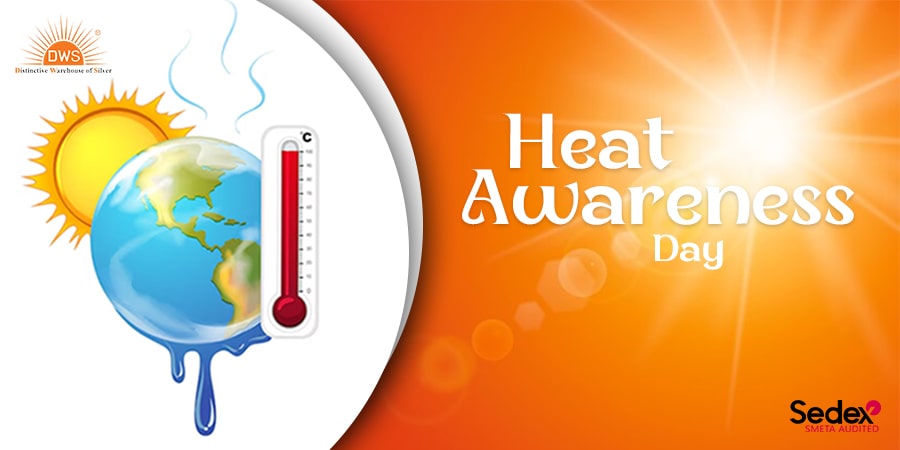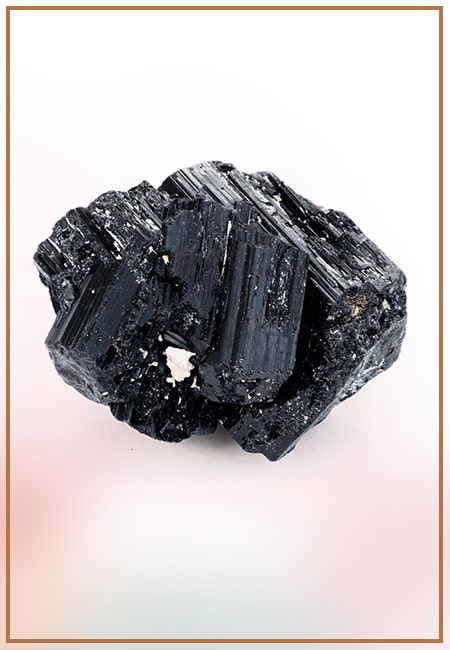- Written By Team DWS
- Festivals
- May 07, 2025
Understanding Extreme Heat: What You Need to Know on Heat Awareness Day
Heat Awareness Day serves as a vital reminder for individuals, communities, and authorities to prepare for and combat the dangerous effects of extreme heat. As temperatures continue to rise due to climate change and urbanization, understanding the risks associated with extreme heat has never been more crucial. This blog aims to shed light on the causes of extreme heat, its health impacts, preventive measures, and the importance of community awareness and preparedness.

What is Extreme Heat?
Extreme heat is defined as a period of excessively hot weather, which may be accompanied by high humidity. The National Weather Service (NWS) often issues heat advisories when temperatures exceed certain thresholds, especially when humid conditions make temperature feel even hotter. It’s important to note that extreme heat affects people differently based on age, health status, and access to resources.
Causes of Extreme Heat
Several factors contribute to extreme heat events:
- Climate Change: Increasing greenhouse gas emissions trap heat in the atmosphere, leading to soaring global temperatures. By 2100, temperatures are projected to increase by several degrees if current trends continue.
- Urban Heat Islands: Cities often experience higher temperatures than surrounding rural areas due to human activities and infrastructures, such as buildings, roads, and vehicles. These urban heat islands exacerbate existing heat concerns.
- Natural Weather Patterns: High-pressure systems, which can linger in an area for extended periods, can lead to prolonged heat waves. Seasonal cycles also play a role, with summers becoming hotter and winters increasingly less severe.
Health Impacts of Extreme Heat
Extreme heat poses significant health risks, particularly for vulnerable populations, including the elderly, young children, and those with pre-existing medical conditions. The main health risks include:
- Heat Exhaustion: Symptoms include heavy sweating, weakness, dizziness, nausea, and fainting. It occurs when the body loses too much water and salt, often due to excessive sweating.
- Heat Stroke: This is a life-threatening emergency that occurs when the body temperature rises to 104°F (40°C) or higher. Symptoms include confusion, seizures, and loss of consciousness. Immediate medical attention is required.
- Dehydration: Excessive heat increases fluid loss due to sweating, leading to dehydration, which can complicate other health conditions and impair physical functions.
- Worsening Chronic Conditions: Extreme heat can exacerbate cardiovascular, respiratory, and other chronic health conditions, leading to increased morbidity and mortality rates during heatwaves.
Preventive Measures
Awareness and preparedness can significantly mitigate the effects of extreme heat. Here are essential preventive measures:
- Stay Informed: Keep track of local weather forecasts and heed any heat advisories issued by authorities. Awareness is the first step in staying safe.
- Hydration: Drink plenty of fluids, especially water, even if you’re not thirsty. Avoid alcohol and caffeine, which can lead to dehydration.
- Dress Appropriately: Lightweight, loose-fitting, and light-colored clothing can help keep you cool. Donning a wide-brimmed hat and sunglasses can help shield you from sun exposure.
- Limit Outdoor Activities: Try to stay indoors during the hottest parts of the day, typically between 10 a.m. and 4 p.m. If outdoor activity is unavoidable, take frequent breaks in shaded or air-conditioned areas.
- Cooling Strategies: Use fans, cooling towels, or air conditioning to lower body temperature. If you lack air conditioning, think about going to air-conditioned locations such as malls, libraries, or community centers.
- Check on Vulnerable Neighbors: Reach out to elderly neighbors or those with health issues to ensure they have the resources they need to stay safe. A simple check-in can make a world of difference.
- Emergency Plans: Develop an emergency plan for your household that includes arrangements for heat emergencies. Identify a safe place to go in the event of extended power outages or heating system failures.
Community Awareness and Preparedness
On Heat Awareness Day, communities must come together to raise awareness about extreme heat. Local governments, health organizations, and schools can play a pivotal role in this effort. Public education campaigns can provide crucial information on the health risks associated with extreme heat and effective coping strategies. Community programs offering cooling centers, emergency shelters, and resources for those in need can significantly reduce heat-related illnesses.
Additionally, encouraging neighborhood gatherings or workshops can empower individuals to share knowledge, resources, and support, fostering a sense of communal responsibility and resilience.
Conclusion
Extreme heat is an escalating public health concern that requires proactive measures and a unified effort from individuals and communities. On Heat Awareness Day, let us commit to understanding the risks, preparing adequately, and ensuring the safety and well-being of ourselves and those around us. By spreading awareness and fostering a sense of community, we can mitigate the effects of extreme heat and protect vulnerable populations from its harmful consequences. Together, we can improve our resilience to heat-related challenges and promote a healthier environment for everyone. Let's take action today to educate ourselves and others about the importance of hydration, shade, and recognizing heat-related illnesses, while also advocating for policies that support sustainable practices and climate resilience. Our collective efforts can make a significant difference in safeguarding public health amidst rising temperatures.

Heat Awareness Day FAQs
Sure! Below are some frequently asked questions (FAQs) regarding Heat Awareness Day:
1. What is Heat Awareness Day?
Heat Awareness Day is an annual observance dedicated to educating the public about the dangers of extreme heat and promoting safety measures to prevent heat-related illnesses. It typically occurs during the hottest months of the year, emphasizing the importance of staying cool, hydrated, and informed.
2. When is Heat Awareness Day observed?
Heat Awareness Day is usually observed in the summer months, but the specific date may vary by region. In the United States, it is commonly recognized on the Last Friday of May, but local organizations and government agencies may choose different dates based on their climate and needs.
3. Why is Heat Awareness Day important?
Intense heat can lead to significant health dangers, such as heat exhaustion and heat stroke. Heat Awareness Day raises awareness about these risks, encourages people to take proactive measures to protect themselves, and shares tips for staying safe during heat waves.
4. What are the signs and symptoms of heat-related illnesses?
Common signs and symptoms include:
- Heat exhaustion: heavy sweating, weakness, dizziness, nausea, headache, or fainting.
- Heat stroke: high body temperature (104°F/40°C or higher), confusion or agitation, rapid pulse, and loss of consciousness.
5. How can I stay safe during extreme heat?
To stay safe during extreme heat, consider the following tips:
- Stay indoors during peak heat hours (typically between 10 AM and 4 PM).
- Drink plenty of water, even if you don’t feel thirsty.
- Wear lightweight and loose-fitting clothing.
- Use fans or air conditioning to keep cool.
- Avoid strenuous outdoor activities.
6. Who is most at risk for heat-related illnesses?
Certain groups are more susceptible to heat-related illnesses, including:
- Infants and young children
- Elderly individuals
- People with pre-existing health conditions (e.g., heart disease)
- Individuals with limited mobility or those taking certain medications
7. Can organizations participate in Heat Awareness Day?
Absolutely! Schools, businesses, community organizations, and local governments can participate by hosting events, providing information on heat safety, and sharing resources to educate their communities.
8. Where can I find more information on Heat Awareness Day?
For more information, check local health department websites, national weather services, or organizations focused on public health and safety. They often provide resources, tips, and guidelines for staying safe during heat events.
9. How can I spread awareness about Heat Awareness Day?
You can spread awareness by sharing information on social media, organizing community events, distributing flyers, or simply discussing heat safety with friends and family. Engaging with local media and encouraging them to cover the issue can also help.
10. What resources are available for heat-related emergencies?
In case of a heat-related emergency, please contact your local emergency services. Additionally, many organizations provide resources online, and local health departments may have hotlines or information on cooling shelters during extreme heat events.
End
Heat Awareness Day is a vital opportunity to educate ourselves and others about the dangers of extreme heat. By taking precautions and spreading the word, we can help save lives and ensure communities stay safe.
Popular on Blogs

Black Tourmaline: Meaning, Healing Properties, Fascinating Facts, Powerful Attributes, Versatile Uses, and Beyond
September 05, 2023 / BY Team DWS
Black Tourmaline, also known as Schorl, is a highly revered crystal with incredible metaphysical properties. It derives its name from the Dutch word "turamali," meaning "stone with ..

Carnelian Stone: Meaning, Healing Properties, Power, Facts, Color, Uses and More
December 26, 2023 / BY Team DWS
Carnelian is a vibrant and captivating gemstone that holds a plethora of meanings, healing properties, and powers. Its warm and fiery energy makes it a popular choice among crystal ..

Citrine: Exploring its Meaning, Healing Properties, Fascinating Facts, Powers, Versatile Uses, and Much More
November 18, 2023 / BY Team DWS
Citrine, with its warm golden hues, has captured the attention and imagination of people for centuries. This beautiful gemstone, commonly associated with wealth and prosperity, hol ..

Black Onyx: Unveiling the Meaning, Healing Properties, Fascinating Facts, Powerful Attributes, Versatile Uses, and Beyond
July 25, 2023 / BY Team DWS
Black Onyx, a striking gemstone admired for its deep black hue and elegant appearance, has captivated people for centuries. In this comprehensive guide, we will delve into the mean ..

Unveiling the Mysteries of Turquoise Stone: Exploring its Meaning, Healing Properties, Power, Facts, Color, Uses, and More
December 05, 2023 / BY Team DWS
Turquoise, with its captivating blue-green hue, has been adorning jewelry and artifacts for centuries. This striking stone has a rich history, rich symbolism, and a plethora of int ..

The History Behind The Popularity of Red Agate
December 23, 2022 / BY Team DWS
An Agate is a type of magma rock that takes many years till it is washed out naturally into the water. And that is the reason this stone has elements of water. This beautiful stone ..

Plan a Perfect Valentine's Week with Our Valentine Week List 2025
January 22, 2024 / BY Team DWS
Valentine's Day is undoubtedly the most romantic day of the year, but we believe that one day is just not enough to express your love and make your partner feel special. That's why ..

Bloodstone: Unveiling the Meaning, Healing Properties, Facts, Powers, Uses, and More
August 21, 2023 / BY Team DWS
Bloodstone, with its captivating deep green color with specks of red, is a mesmerizing gemstone that has fascinated civilizations for centuries. It possesses unique healing propert ..


